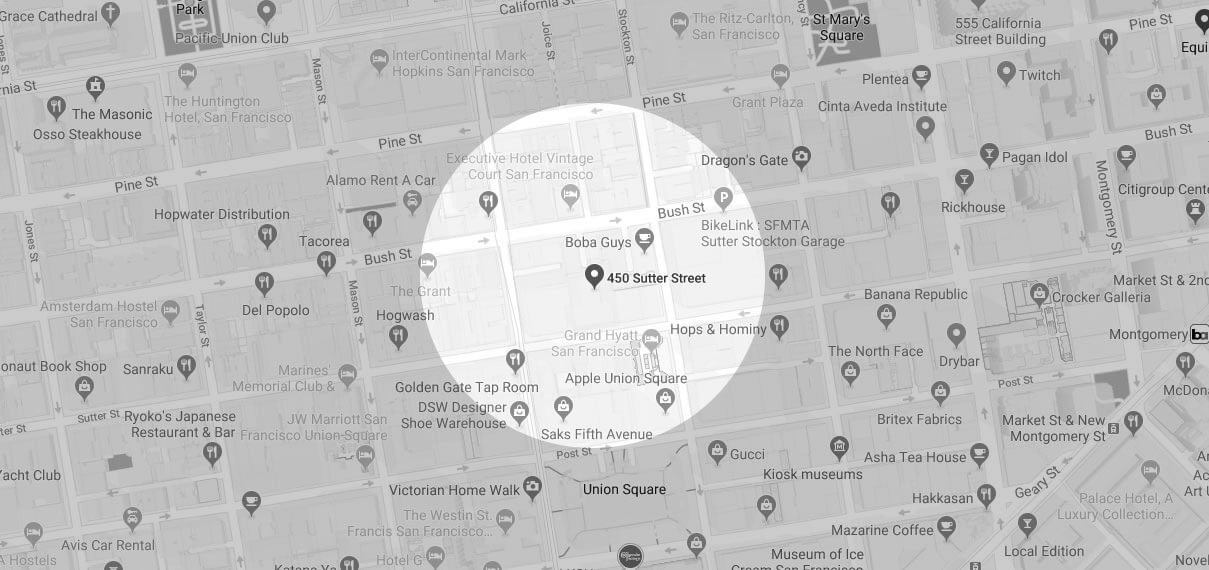By Dr. Maria Rodriguez, DDS - My Dentist San Francisco
Welcome to a comprehensive exploration of the future of Invisalign and its role in the evolving world of orthodontics. As a practicing dentist at My Dentist San Francisco, I have the privilege of witnessing the remarkable transformations achieved through Invisalign. This technology has not just revolutionized orthodontic treatment; it has also opened up new possibilities in patient care and dental aesthetics. In this article, I will delve into the technical advancements of Invisalign, discussing both the current state and the exciting future prospects of this innovative orthodontic solution.

Evolution of Invisalign Technology
The Advent and Advancements of Invisalign
Invisalign, since its inception, has been at the forefront of orthodontic innovation. Initially designed for minor dental corrections, it has evolved to tackle more complex orthodontic issues. This evolution is a testament to the continuous research and development efforts aimed at enhancing its efficacy. The journey from simple aligners to sophisticated treatment solutions reflects the commitment to innovation in orthodontics.
Material and Design Innovations
The leap in material technology, particularly with the introduction of the patented SmartTrack material, marked a significant milestone. This material not only improved the comfort of the aligners but also enhanced their effectiveness in moving teeth. The design advancements, coupled with this new material, have allowed for more predictable and efficient tooth movement, making Invisalign a viable option for a broader range of orthodontic cases.
Digital Imaging and Treatment Customization
Digital imaging, especially with iTero scanners, has revolutionized treatment planning in Invisalign therapy. These advanced scanning technologies provide precise 3D models of patients' dental structures, allowing for the creation of highly customized aligners. This level of customization is pivotal in achieving desired treatment outcomes and ensures a seamless fit for each patient.
Improving Patient Compliance and Experience
Invisalign has always prioritized patient experience. Recent innovations focus on enhancing patient comfort and ensuring compliance with treatment protocols. Features like wear indicators and mobile application integrations are designed to empower patients in their treatment journey, encouraging adherence to prescribed wearing schedules and thus improving treatment outcomes.
Artificial Intelligence in Orthodontics
Integrating AI in Treatment Planning
Artificial Intelligence (AI) has brought a paradigm shift in Invisalign technology. AI algorithms assist in creating efficient and effective treatment plans by predicting tooth movements with greater accuracy. This integration of AI not only streamlines the treatment planning process but also elevates the precision of orthodontic interventions.
Machine Learning for Enhanced Customization
Machine learning, an aspect of AI, plays a crucial role in aligner customization. By analyzing data from thousands of treated cases, these algorithms continuously refine and improve the treatment protocols. This results in highly individualized treatment plans that cater to the unique dental anatomy and treatment goals of each patient.
The Role of Predictive Analytics
Predictive analytics in Invisalign treatments enable practitioners to anticipate and mitigate potential treatment challenges. This forward-looking approach significantly enhances the predictability of treatment outcomes, allowing for adjustments to be made proactively for optimal results.
Enhancing Patient Engagement with AI
AI-powered tools have also revolutionized patient engagement in orthodontic treatment. Interactive tools and visualizations provided by these technologies offer patients a glimpse into their future post-treatment dental alignment, fostering a deeper engagement with their treatment process and enhancing adherence to treatment protocols.
Biomechanical Innovations
Advancements in Aligner Materials
The development of new materials for Invisalign aligners has been a game-changer in orthodontics. These materials are engineered to apply the optimal amount of force required for tooth movement, thereby enhancing the efficiency of the treatment. The focus on material science has led to aligners that are not only effective but also comfortable for the patient, thus striking a balance between efficacy and patient experience.
Precision in Complex Tooth Movements
The design of Invisalign aligners has seen significant refinements, enabling them to execute complex tooth movements with greater precision. This includes the effective treatment of challenging orthodontic issues like rotations, extrusions, and deep bites, expanding the scope of cases that can be effectively treated with Invisalign.
Integration with Other Dental Technologies
Invisalign's compatibility with other dental technologies, such as temporary anchorage devices (TADs), has expanded its applicability. This synergy between different technologies enhances the scope of orthodontic treatment, allowing for more comprehensive care.
Focus on Periodontal Health
Invisalign's recent innovations also emphasize the importance of maintaining periodontal health during orthodontic treatment. The design of the aligners, along with adjunct therapies, is increasingly oriented toward preserving the health of the gums, which is crucial for the long-term success and stability of orthodontic outcomes.
Remote Monitoring and Tele Orthodontics
The Rise of Remote Monitoring in Orthodontics
Tele Orthodontics and remote monitoring have revolutionized the way Invisalign treatments are managed. This technology allows for the remote assessment of patient progress, significantly reducing the need for frequent in-office visits. This advancement is not just about convenience; it's a fundamental shift in managing and monitoring orthodontic treatment, providing flexibility and efficiency for both patients and practitioners.
Enhancing Treatment Efficiency and Patient Convenience
The integration of remote monitoring in Invisalign treatments has greatly improved treatment efficiency. Patients can now share updates on their progress with their orthodontists from the comfort of their homes. This capability facilitates timely adjustments to treatment plans, ensuring continuous and uninterrupted progress towards the desired outcome. Additionally, it offers a level of convenience previously unseen in orthodontic care, making it easier for patients to integrate treatment into their busy lives.
The Role of Data in Treatment Optimization
Remote monitoring systems provide a wealth of data on aligner wear and patient compliance. This information is invaluable in making informed, data-driven decisions about the course of treatment. By understanding patterns in aligner use and patient behavior, orthodontists can tailor their approach to maximize treatment effectiveness and efficiency.
Expanding Access to Orthodontic Care
Perhaps one of the most significant impacts of tele orthodontics is its role in expanding access to orthodontic care. By enabling remote consultations and monitoring, this technology brings specialized orthodontic services to patients in remote or underserved areas. This democratization of access is a crucial step in ensuring that high-quality orthodontic care is available to a broader segment of the population, regardless of geographic location.
Sustainability in Orthodontic Products
Embracing Eco-Friendly Materials in Orthodontics
The orthodontic industry, particularly with products like Invisalign, is increasingly conscious of its environmental impact. The development of eco-friendly materials for aligners is underway, aiming to reduce the ecological footprint of these widely used products. This shift towards sustainability reflects a growing recognition of the environmental responsibilities of the dental and orthodontic industries.
Aligner Recycling and Environmental Impact
Invisalign has initiated innovative recycling programs for used aligners, addressing the environmental concerns associated with disposable aligner systems. These programs are crucial in managing the environmental impact of these products, promoting a more sustainable approach to orthodontic treatment.
Sustainable Manufacturing Practices
The move towards sustainable manufacturing processes is another key aspect of this green revolution. This includes efforts to reduce energy consumption and minimize waste during the production of aligners. By adopting more eco-friendly manufacturing practices, the orthodontic industry is taking significant steps towards reducing its environmental impact.
Future Directions in Sustainable Orthodontics
The quest for sustainability in orthodontics is an ongoing process. Future innovations are anticipated to further minimize the ecological impact of orthodontic treatments, aligning the industry with broader environmental sustainability goals. These efforts are not just about complying with regulatory standards but also about meeting the growing demand from patients for environmentally responsible healthcare options.
Customization for Diverse Patient Needs
Addressing a Wide Range of Dental Anomalies
Invisalign has made significant strides in customizing treatments for a diverse array of dental anomalies. With advancements in digital imaging and AI, Invisalign can now cater to a wider variety of anatomical structures and orthodontic issues. This customization is crucial in providing effective and efficient treatment for each unique patient, ensuring that the aligners are not just a one-size-fits-all solution, but a personalized treatment plan tailored to individual needs.
Personalized Treatment for Enhanced Outcomes
The ability to personalize treatment plans has a profound impact on treatment outcomes. By considering the specific dental and facial structure of each patient, Invisalign aligners can be designed to provide optimal movement of teeth, leading to more effective and aesthetically pleasing results. This level of personalization is particularly important in complex cases, where standard treatment approaches may not be sufficient.
Technological Integration for Comprehensive Care
The integration of Invisalign with other dental technologies, such as 3D imaging and digital treatment planning tools, has created a more comprehensive approach to orthodontic care. This holistic approach not only enhances the accuracy of the treatment but also improves the overall patient experience, making the journey towards a perfect smile more comfortable and predictable.
The Future of Customized Orthodontic Solutions
Looking ahead, the continued evolution of Invisalign technology promises even greater levels of customization and effectiveness. The ongoing development of new materials, design techniques, and digital tools will further refine the ability to tailor treatments to the specific needs of each patient, ensuring that Invisalign remains at the cutting edge of orthodontic innovation.
Integration of Invisalign with Comprehensive Dental Care
Invisalign as Part of Holistic Dental Treatment
Invisalign's role in comprehensive dental care extends beyond orthodontics. Its integration with general and cosmetic dentistry practices allows for a more holistic approach to dental health and aesthetics. By aligning teeth effectively, Invisalign not only improves oral functionality but also sets the stage for further cosmetic dental procedures, such as veneers or teeth whitening. This integrated approach ensures that the overall dental health and aesthetic goals of patients are met, providing a comprehensive treatment plan that addresses both functional and cosmetic needs.
Enhancing Restorative Dentistry Outcomes
Invisalign's precision in aligning teeth plays a vital role in restorative dentistry. Proper alignment is often a prerequisite for complex restorative procedures, ensuring that replacements like crowns, bridges, or implants fit perfectly and function optimally. By preparing the oral environment with Invisalign, dentists can achieve better outcomes in restorative treatments, enhancing both the longevity and aesthetics of these solutions.
Collaborative Care Between Orthodontics and General Dentistry
The collaboration between orthodontists and general dentists is crucial in leveraging the full potential of Invisalign. By working together, dental professionals can develop comprehensive treatment plans that address multiple aspects of dental health. This collaboration ensures a seamless treatment experience for patients, where their orthodontic needs are aligned with their broader dental health objectives.
Future Trends in Integrated Dental Care
The future of dental care is increasingly leaning towards integrated treatment approaches. Invisalign, with its versatile and advanced technology, is well-positioned to play a key role in this trend. As dental technologies continue to evolve, the potential for more innovative and effective integrated treatments is vast, promising better patient outcomes and more efficient dental care.
Advances in Patient Education and Engagement
Leveraging Technology for Enhanced Patient Understanding
Invisalign's advancements are not limited to treatment technologies; they also extend to patient education and engagement. The use of digital tools and virtual reality in patient consultations provides a more interactive and understandable way for patients to grasp their treatment plans. This technological approach to patient education ensures that patients are well-informed and comfortable with their treatment journey, leading to higher satisfaction and compliance.
Interactive Tools for Treatment Visualization
Interactive tools, such as virtual simulations of treatment outcomes, play a pivotal role in patient engagement. These tools allow patients to visualize the potential results of their Invisalign treatment, setting realistic expectations and fostering a sense of excitement and commitment to the treatment process.
The Role of Mobile Applications in Patient Compliance
Mobile applications specifically designed for Invisalign users have significantly improved patient compliance and engagement. These apps provide reminders, progress tracking, and educational content, making it easier for patients to adhere to their treatment schedules and stay informed about their treatment progress.
Future Directions in Patient-Centric Orthodontics
The future of orthodontics is increasingly patient-centric, with a focus on providing personalized and engaging treatment experiences. Invisalign in San Francisco, through its continuous technological advancements, is poised to lead this shift, offering more interactive, informative, and customized treatment journeys for patients. This evolution towards patient-centric care not only enhances treatment outcomes but also transforms the overall patient experience in orthodontics.
Final Thoughts
The future of Invisalign in orthodontics is a landscape of continuous innovation and advancement. From material and design improvements to the integration of AI and digital technologies, Invisalign is set to redefine orthodontic treatment. As a dental professional at My Dentist San Francisco, I am excited to be part of this evolving field, offering my patients the most advanced and effective orthodontic solutions. The journey ahead for Invisalign is promising, with its potential to enhance patient care, improve treatment outcomes, and revolutionize the way we approach orthodontics.



